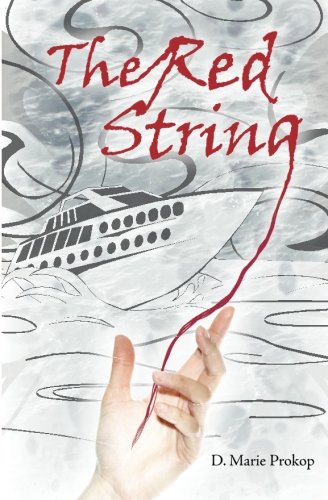 I picked up this book at a local Comic Con – Baytown TX to be exact. I was there at my publisher’s table, hawking my book (and others) and figured I’d spread a little love to other local authors who were doing the same. There wasn’t much conversation, but I’m assuming that the woman who sold me the book was the author. Maybe not.
I picked up this book at a local Comic Con – Baytown TX to be exact. I was there at my publisher’s table, hawking my book (and others) and figured I’d spread a little love to other local authors who were doing the same. There wasn’t much conversation, but I’m assuming that the woman who sold me the book was the author. Maybe not.
From the title and back cover, I knew that there would be a spiritual theme. The red string phenomena appears to be rooted in Jewish folklore. It was originally used for protection from the evil eye. That belief is less prevalent now, and red strings are worn or carried for a variety of reasons – one of those reasons was Madonna wearing one in her Kabbalah phase.
 The book itself is billed as SciFi. There were only 18 reviews for it on Amazon. The book was published in 2013 and has languished.
The book itself is billed as SciFi. There were only 18 reviews for it on Amazon. The book was published in 2013 and has languished.
If a book has low sales, and a low number of reviews, most of which are 5 stars, you get slotted into the Mommy Zone – You wrote a book. Your mom read it and all the family has now written reviews or posted ratings. Then the reviews stagnate, and you start becoming less relevant to those searching for books. Amazon drops you down in the results. D. Marie Prokop, I feel your pain.
You exit the Mommy Zone by getting more reviews. You need people to whom you’re not related to read and review the book. Some of them won’t love it. Some may not even like it and will give you less than 5 stars. The Harry Potter series has an average of 4.2 stars. Amazon likes that, and you begin climbing the list again.
Back to The Red String. It’s the story of an adolescent female with a history of seizures that render her without value to her dystopian society. She’s not implanted with the chip that would allow her to make purchases. She lives on donations. She is given yarn and learns to knit.
Her condition makes her the perfect target for a mad scientist. He has an experimental plan to implant a device in her brain to control the seizures while adding new abilities. His son is assigned to be her keeper. When boy and girl develop a relationship, the boy is banished. The girl is heartbroken. The surgery takes place, and the story takes some interesting turns. The Guardian influences the actions of his/her followers from the shadows.
It’s 213 pages, 27 chapters and self-published. That is obvious. The book has a few interesting ideas that a decent developmental editor would push the author to expand. There are also more than a couple logic gaps that might have been pointed out and closed. There are very few typos.
Prokop’s writing is solid. She can craft a sentence, and some of them are great. Unfortunately, she settled for “good enough” most of the time. She might have gotten frustrated with the whole “search for an agent” thing.
What’s good: Some decent neuroscience references and tie-ins. A couple of supporting characters get developed enough to become interesting. I actually wanted to read more about them and less about the main characters.
What could be better: The villain is little more than a caricature – we get that he’s evil but toning him down might make the whole book better. The main male and female characters overcome adversity and change in step-function fashion. The growth is abrupt and feels far too easy.
The Feral-O-Meter came in at a 6 out of 10 for the story. One caveat – I liked the story enough to read her second book in the series. The writing should be better. However, I would never recommend buying a physical copy of this on Amazon. The paperback is listed for over $30. That’s insane for a book that has been out eight years and is mediocre. I think I paid $10 at the Baytown Con. Ebooks are nearly free. Go with those.
For the science it’s a hard call. The neuroscience is decent…to a point. There are tremendous leaps that occasionally broke my willingness to suspend my disbelief. Let’s call it a four.
Spoilers follow.
Logic gaps:
If you have the power to make a cruise ship invisible, you need to do something about the cruise ship shaped hole in the ocean. It’s not going to be small.
If the same cruise ship makes an abrupt turn toward the nearest border and then starts running as fast as it can, even dumb bad guys can connect those dots and plot the intercept course. Going invisible doesn’t help if you don’t change your speed or direction.
If you can make your magic cloak of invisibility have a downside (severe depression for all within), don’t magically dismiss that downside by saying “Okay, now it’s only around the outside of the ship and can’t harm those inside the ship.”
Bottom line: Not a great read, but interesting enough to make me want to track down the next book in the series.

